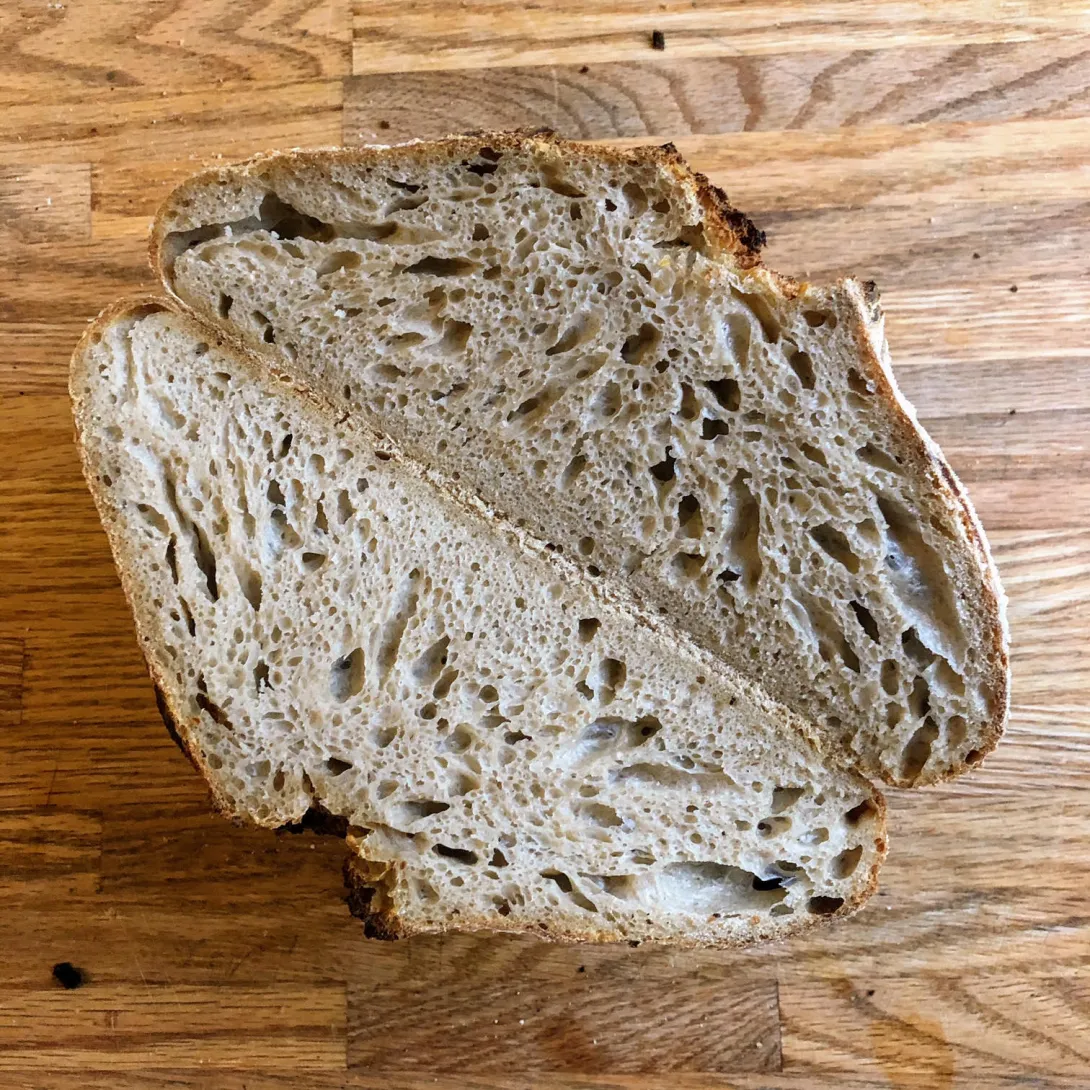
Hello everyone,
I've been seeing the same pattern in my crumb for the past 3/4 loaves, not very airy and those kind of elongated holes reaching for the top opening in the crust. flowing in the same direction instead of being nice spherical bubbles. Wondering what am I doing wrong to get this.
The process is , 10%starter (rye), sifted wheat (so semi whole wheat) , 82% hydration, 3 h autolyse, regular coil folds, bulked until the aliquot roughly doubled then15 h cold final retard. Oven 500F 20mn then 450 20mn.
Any expert eyes who could see what could be wrong ? Thanks !


It doesn't look like anything is wrong to me! I think that is just what happens when you are baking with 82% hydration and a hot oven, all the pressure and gas tries to erupt through the slashes at the top. The super wet dough is yielding and lets it through.
If you wanted a more even crumb I would try reducing both the hydration and the temperature a bit, but I love the look of what you've got there.
This is not a disagreement with Floyd's comments, but rather a supplement. Two things caught my eye. One is the somewhat flattened shape of the loaf, and the second is the somewhat congested area at the bottom of the loaf. When I see those two things in my loaves it is usually a sign that I let the bulk fermentation phase go a bit too long. Next time, perhaps let the bulk go until the aliquot jar tells you the dough is about 80% risen (instead of roughly doubled).
Happy baking.
Ted
Thanks for the feedback, will definitely try to reduce the bulk to find the sweet spot.
I also like the hole design in your crumb. The dense section at the bottom of the loaf has me wondering if the heat at the bottom of the loaf was lacking.
Did you use a baking stone?
Was it baked inside a vessel?
Tell us about the oven temp(s).
All in all, a very nice looking bread.
Danny
Also, looking at the top/down shot of the loaf it appears the gluten was not strong enough to contain all of the gas. Notice the holes. If gas did escape there, imagine how much more the loaf could have grown in height if all of the gas remained captured. You are on your way to something really good!
Thanks for the pointers, makes sense - It is baked inside a closed "cloche" made of clay. the oven is at 500F for the 1st 20mn (after a good 45mn of preheating) and 450F after . but thinking of it, a quick check I made once with my IR temp reader after preheating only said 430F , so maybe the oven and/or the cloche are too cold indeed . As for the top, yes we can see some escape through there. Wondering what would reinforce the gluten here. Thanks again !
Jean, “ Wondering what would reinforce the gluten here.“
Since I don’t know exactly how the dough behaved and was handled, it is difficult to know for sure.
But maybe one or more suggestions below (pretaining to the gluten issue) may help.
The above are thoughts, things for consideration. Your bread is very nice. These suggestions may make a good loaf even better. Next bake take more pictures during various stages. We may get clues that will help.
Danny